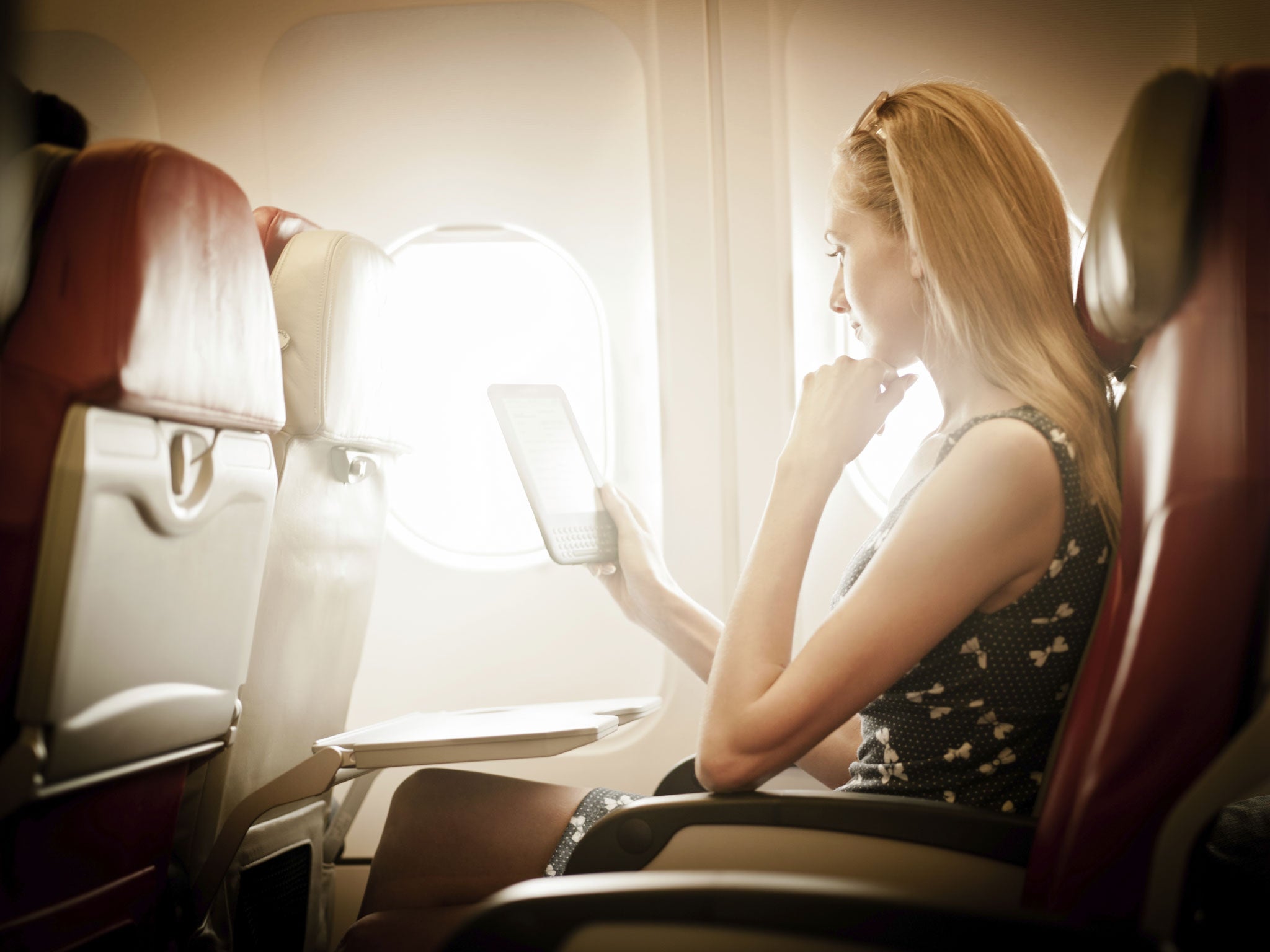This is your captain speaking. Please feel free to turn your iPads on: US aviation regulator lifts ban on use of e-books and tablets on flights

Doors to automatic, engage iPad or Kindle. This is the future of flying.
The US aviation regulator has relaxed rules on the use of tablets and e-readers, opening the door for passengers “to read e-books, play games, and watch videos on their devices during all phases of flight” - except for the pre-flight safety briefing.
The Federal Aviation Administration has eliminated many of the rules that have annoyed passengers for a decade or more. Mobile phones, though, must remain switched off, unless they are in “flight safe” mode, disabling the ability to make or receive calls or text messages.
Frustrated passengers - and UK airlines fearful of American competitors gaining an edge - will increase pressure on Britain's Civil Aviation Authority to ease restrictions on electronic devices.
At present, the global standard is that no “personal electronic devices” (PEDs) may be switched on while the aircraft is taxiing on the ground, taking off or landing, or below 10,000 feet. The restrictions were imposed because of fears that electro-magnetic signals from these devices could interfere with aircraft systems. But many passengers fail to comply, either deliberately or accidentally.
Over the past year, a group of experts - the PED Aviation Rulemaking Committee - has concluded that they pose no threat in the vast majority of cases. American carriers are required to apply for permission to allow passengers to use their personal devices throughout the flight, but this is expected to be a formality.
On US carriers, whether flying domestically or internationally, the usual request for devices to be switched off when the cabin door is closed will soon end. The FAA insists, however, that passengers must “put down electronic devices, books and newspapers and listen to the crewmember's instructions” during the safety briefing.
During some landings in low visibility, the FAA says, “Some landing systems may not be proved PED tolerant, so you may be asked to turn off your device”. This is expected to affect about one per cent of flights.
The US Transportation Secretary, Anthony Foxx, said: “These guidelines reflect input from passengers, pilots, manufacturers, and flight attendants”.
Far more flights operate to, from or within the US than any other nation, and the FAA's lead is expected to be followed by regulators worldwide. But the CAA's policy, most recently stated in September, is that a large number of devices being used simultaneously “Could affect the sensitivity of the aircraft receiver systems, preventing them from being able to detect the faint electromagnetic signals used for such purposes as navigation.”
Some passengers will hope that the next stage will be a relaxation of the rules on mobile phones, which are stricter in the UK than the US, where phones may be used immediately the aircraft has exited the runway. The CAA states: “Scientific research has shown that mobile phones can interfere with the normal operation of aircraft equipment and can also cause interference in pilot's headsets”. But British Airways is currently undertaking a CAA-approved trial allowing passengers to use mobile phones for voice/text functions while taxiing to the terminal after arrival.
Top things passengers should know about expanded use of PEDs on airplanes
1. Make safety your first priority
2. Changes to PED policies will not happen immediately and will vary by airline. Check with your airline to see if and when you can use your PED.
3. Current PED policies remain in effect until an airline completes a safety assessment, gets FAA approval, and changes its PED policy.
4. Cell phones may not be used for voice communications.
5. Devices must be used in airplane mode or with the cellular connection disabled. You may use the WiFi connection on your device if the plane has an installed WiFi system and the airline allows its use. You can also continue to use short-range Bluetooth accessories, like wireless keyboards.
6. Properly stow heavier devices under seats or in the overhead bins during takeoff and landing. These items could impede evacuation of an aircraft or may injure you or someone else in the event of turbulence or an accident.
7. During the safety briefing, put down electronic devices, books and newspapers and listen to the crewmember’s instructions.
8. It only takes a few minutes to secure items according to the crew’s instructions during takeoff and landing.
9. In some instances of low visibility – about one percent of flights – some landing systems may not be proved PED tolerant, so you may be asked to turn off your device.
10. Always follow crew instructions and immediately turn off your device if asked.
Source: US Federal Aviation Administration
Join our commenting forum
Join thought-provoking conversations, follow other Independent readers and see their replies
Comments